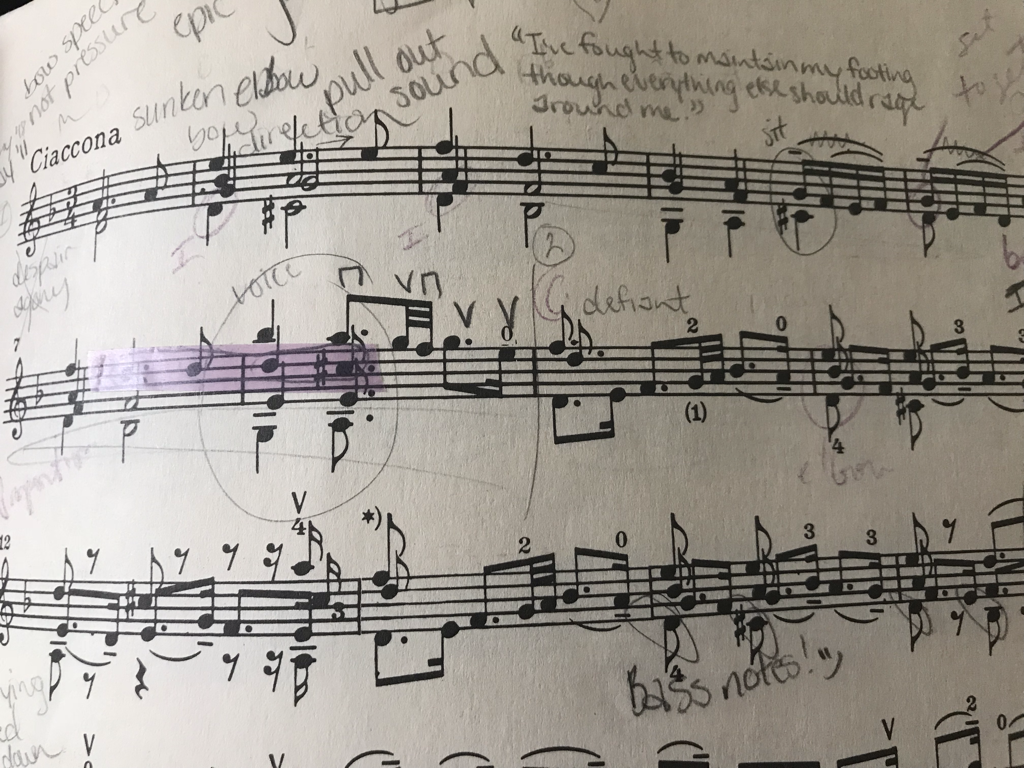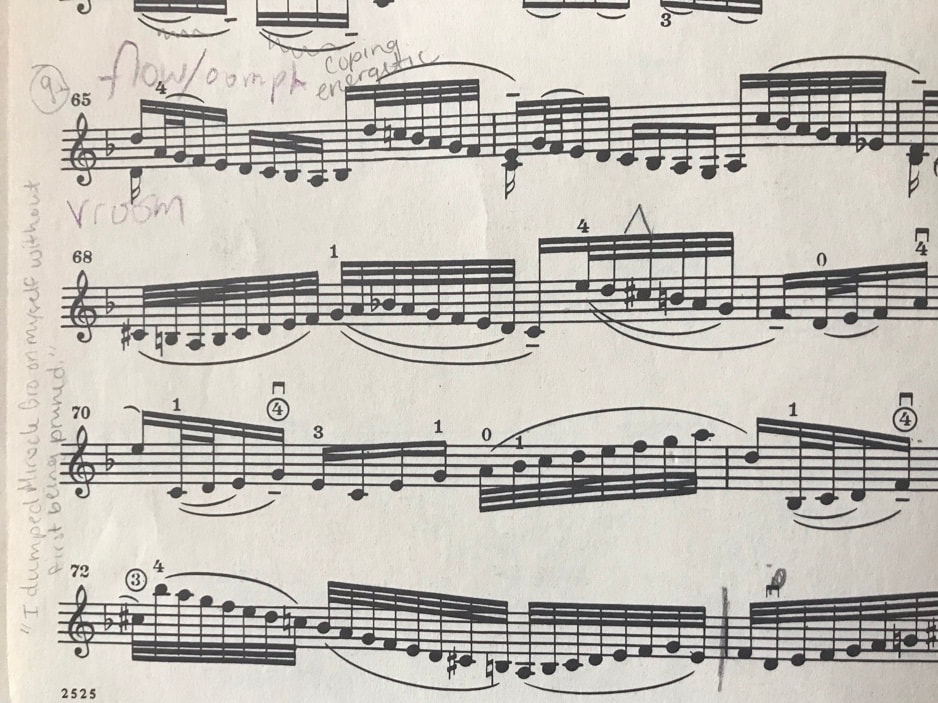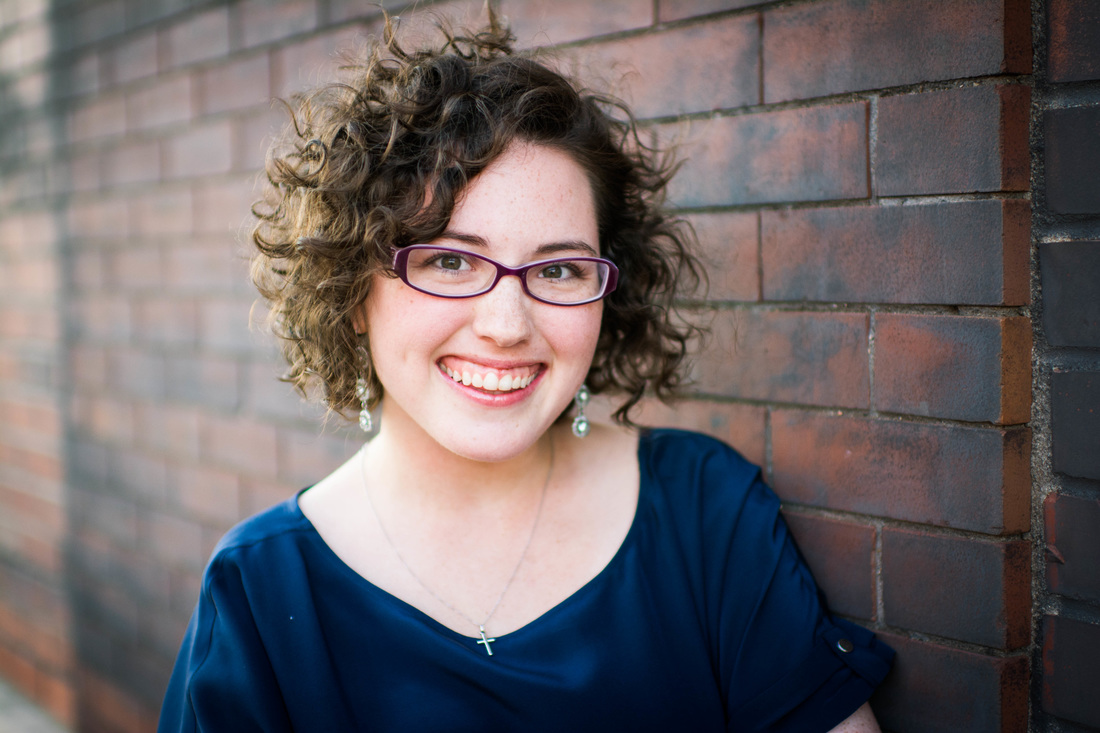|
When I began sketching out ideas for this blog post a few weeks ago, I had a rough idea of the approach I wanted to take: very process-based, a look into studying a dear piece more than once, and how to negotiate marking a score up when you’re a different musician and person from the last time you studied the piece. I wanted to explore how the markings we put in scores are personal, powerful, and essentially turn our scores into mixed media journal entries. They’re snapshots into a specific period of life. I reference journal entries because I’ve habitually journaled for about 15 years so it’s become another outlet for me. As I’ve matured, I’ve maintained this written record (it’s pretty cringe-y much of the time, especially in high school…) and learned how to use this powerful tool to process the world around me. While I still intend to discuss that a bit, I’d also like to share how the two creative outlets I engage with can support and enhance each other. Since my early undergraduate days, I’ve more actively explored how having two outlets, violin playing and journaling, support and enable the other toward greater clarity. When searching for words is more of a hindrance than help, I play my violin and work through the emotions and events I need to process without them. I recall during a rough semester during my undergrad being told by my professor to “tell your violin all about it.” That advice rings in my mind quite often in times of stress or sorrow. Conversely, sometimes I feel too much to be able to play because the different emotions feel like a ball of wire that’s in a giant knot. Differentiating between them all seems impossible! I can’t count the number of times I’ve had to put down my violin recently and write before I could approach it again. Picking up the instrument again, then, I usually have an idea of what emotion or idea I want to put where in the music and can work toward making that clear. I seem to have this habit about referencing the solo Bach literature whenever I write about some of my processes, but honestly it’s such intimate music that it makes an amazing canvas for blending music and journaling. This year, I have the opportunity to re-visit a dear old friend in the solo Bach literature: The Chaconne from the d minor Partita. I previously studied this piece during my undergrad and have been longing to re-visit it since I completed my first study of the complete solo Bach literature back in the spring of 2017. My score is a time capsule of who I was as a musician and human when I last studied it (Summer and Fall of 2011). One of the challenges of returning to it, then, is keeping what still resonates with you and making room for new inspiration. Not only has my musicianship changed, but my process has evolved as my playing has matured, and I’m in a completely different phase of life.
What I love most, though, is how I’ve gone in an incredibly literal direction with this idea. I hadn’t thought of doing that before this fall, but I’ve found I needed more than a word here or there to focus my musical intentions. In the midst of many possible musical inflections and having previously studied the Chaconne, this method has been really helpful as I seek to authentically convey where I am and who I am right now (not 7 years ago!) through this piece.
Do you have any scores that are so marked with musical and personal indications that they’re practically a journal entry unto themselves? (Or a time capsule, if you prefer.) Have you actually lifted passages from your journal to place into your music to help remind you of your musical ideas? Leave a note about it in the comments!
1 Comment
|
Archives
November 2018
Categories
All
|



 RSS Feed
RSS Feed